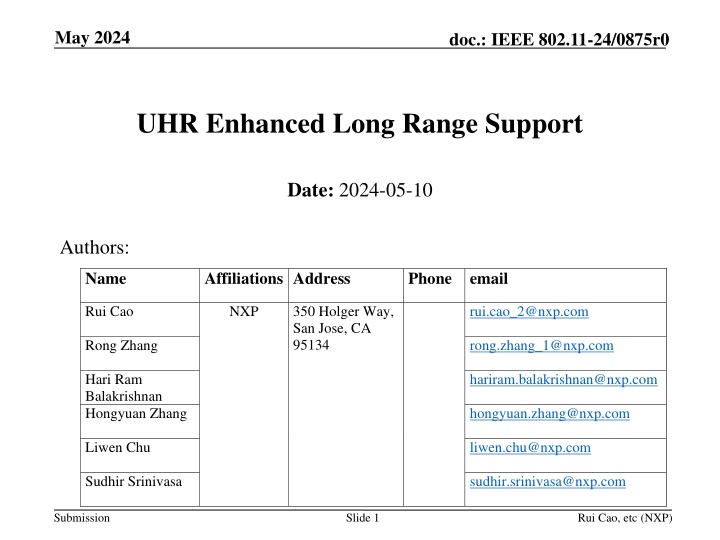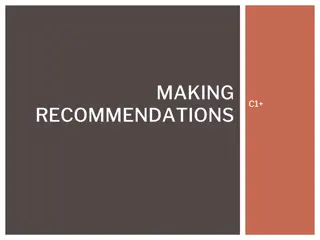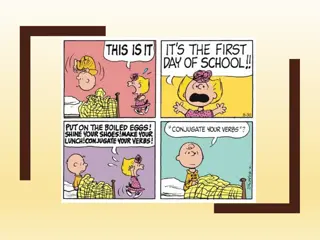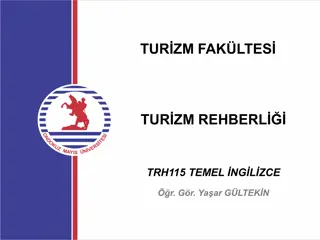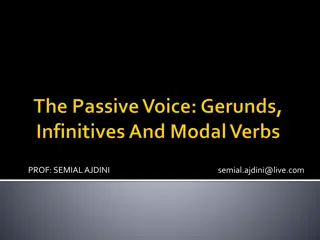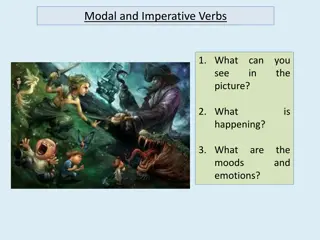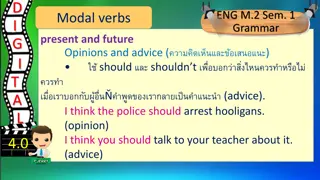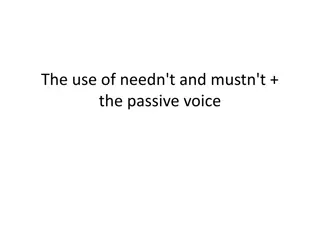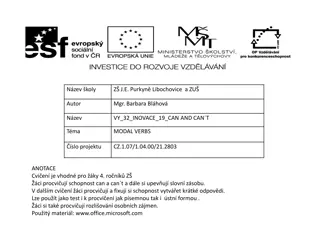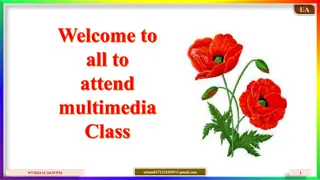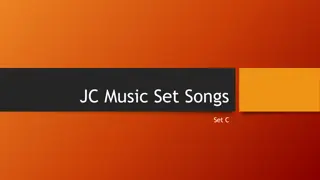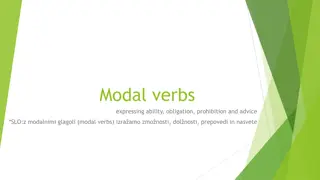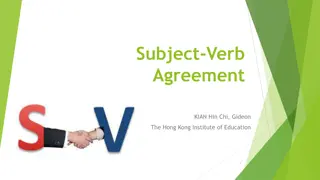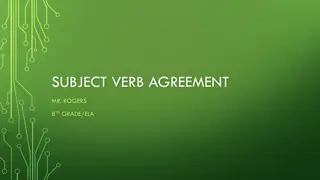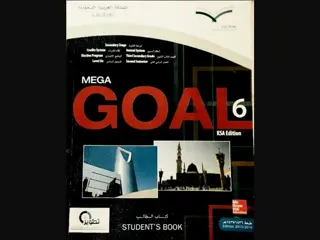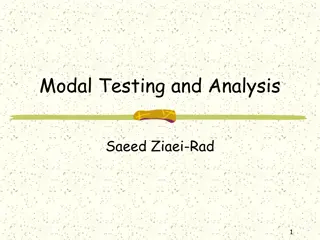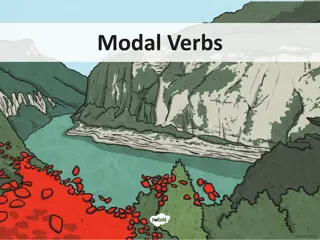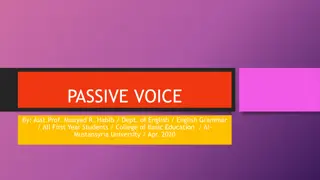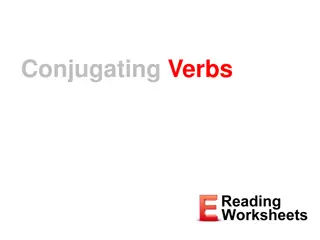Modal Verb 'Needn't' in Context
Modal verbs play a crucial role in expressing attitudes, advice, and necessity in English. Explore the usage of 'needn't' in various scenarios through examples and images. Understand how this modal verb signifies actions that were not necessary or obligatory, providing insights into forming negative sentences and unnecessary opinions.
Download Presentation

Please find below an Image/Link to download the presentation.
The content on the website is provided AS IS for your information and personal use only. It may not be sold, licensed, or shared on other websites without obtaining consent from the author.If you encounter any issues during the download, it is possible that the publisher has removed the file from their server.
You are allowed to download the files provided on this website for personal or commercial use, subject to the condition that they are used lawfully. All files are the property of their respective owners.
The content on the website is provided AS IS for your information and personal use only. It may not be sold, licensed, or shared on other websites without obtaining consent from the author.
E N D
Presentation Transcript
May 2024 doc.: IEEE 802.11-24/0875r0 UHR Enhanced Long Range Support Date: 2024-05-10 Authors: Name Affiliations Address Phone email NXP Rui Cao 350 Holger Way, San Jose, CA 95134 rui.cao_2@nxp.com Rong Zhang rong.zhang_1@nxp.com Hari Ram Balakrishnan Hongyuan Zhang hariram.balakrishnan@nxp.com hongyuan.zhang@nxp.com Liwen Chu liwen.chu@nxp.com Sudhir Srinivasa sudhir.srinivasa@nxp.com Submission Slide 1 Rui Cao, etc (NXP)
May 2024 doc.: IEEE 802.11-24/0875r0 Introduction During the UHR SG, several contributions discussed about enhanced long range feature [1, 2, 3, 4] In this presentation, we will share our view on the need and design target for UHR long range. Submission Slide 2 Rui Cao, etc (NXP)
May 2024 doc.: IEEE 802.11-24/0875r0 Long Range Needs STA s UL range limitation due to lower Tx power: Full AP v.s. client STA Tx power asymmetry: ~10dB or so 4x4 AP to 2x2 client or 2x2 AP to 1x1 client UL range is shorter than DL beacon General issue for all bands: 2.4GHz, 5GHz, 6GHz (AFC) For 6GHz LPI operation, client has 6dB lower PSD limitation. Mobile AP or P2P range Smaller Tx power asymmetry with the similar hardware capabilities In 2.4GHz, range is longer with 11b beacon However, not compatible with later amendments and performance limitation Need to define a long range OFDM PPDU with better coex and performance Submission Slide 3 Rui Cao, etc (NXP)
May 2024 doc.: IEEE 802.11-24/0875r0 BSS range with power asymmetry 11ax with ER PPDU 11ax with UORA/UL TB 11ac AP Beacon range (6mbps) Submission Slide 4 Rui Cao, etc (NXP)
May 2024 doc.: IEEE 802.11-24/0875r0 Devices up to 802.11ac support WiFi 5 devices Beacon in legacy format: range is ~2x of service range Service range limited by UL range Association, BA/ACK, sounding FB, etc. Current solution 11b for UL in 2.4GHz, ~6dB Data, BA/ACK, RTS-CTS, etc. Submission Slide 5 Rui Cao, etc (NXP)
May 2024 doc.: IEEE 802.11-24/0875r0 11ax solutions Technologies: UORA for association: 26-tone RU in 20MHz to achieve ~10dB per-tone power gain Limitation for DFS channel and PSD limited channel Not popular in products on the market DL Data: MU-BAR to single user with 26-tone RU BFRP with single 26-tone RU, TB SU is optional, not popular UL Data: a) TB SU with smaller RU, e.g. RU26 in 20MHz Limitation for DFS channel and PSD limited channel Efficiency is low without effective BSRP report b) HE ER PPDU: ideally 6dB (106DCM) realistically ~4dB, beam change Applies to 2.4/5/6GHz Submission Slide 6 Rui Cao, etc (NXP)
May 2024 doc.: IEEE 802.11-24/0875r0 11bn Response 11ax ER solution is complex and limited UORA, MU-BAR/BFRP with single user, TB PPDU with single user 11be only adds MCS14 for PSD limited channels 11bn (UHR) to define an UHR long range PPDU to Improve STA s UL range due to DL/UL power asymmetry UL association request, sounding feedback, BA/ACK, UL SU data Improve coex and throughput in 2.4GHz, both DL/UL Submission Slide 7 Rui Cao, etc (NXP)
January 2024 doc.: IEEE 802.11-24/0875r0 Design Target DL/UL link budget difference: ~6 dB E.g. 10dB Tx power difference between 4x4 AP and 2x2 STA 1x4 MRC gain impact 5.4 -2.3 4x1 CDD DL/UL Pow Diff 13 DL-UL link budget 5.3 MCS0 MCS0 2x4 Sens 5.5 4x2 Sens 0.4 DL Pow Gain 10 DL-UL 4.9 MCS0 1x2 Sens 3.1 2x1 Sens -0.6 DL Pow Gain 10 DL-UL 6.3 2.4GHz: typical 11b sensitivity is ~6dB better than 11a 10.4dB spreading gain, ~6dB coding loss, 1~2dB Tx power gain UHR target to define a low data rate about of 6mpbs 1.5 Mbps Submission Slide 8 Rui Cao, etc. (NXP)
May 2024 doc.: IEEE 802.11-24/0875r0 Summary Evaluated the need for range enhancement for UHR. DL/UL link budget imbalance for all bands (2.4/5/6GHz) Support of better coex and throughput in 2.4GHz band at the longest range for Mobile AP and P2P applications Analyzed the target for UHR enhanced long range design A definition of a minimum data rate of 1.5mbps or so. Submission Slide 9 Rui Cao, etc (NXP)
May 2024 doc.: IEEE 802.11-24/0875r0 Reference [1] 22/1928, Enhanced Long Range-Usage Scenarios, Design Target and Feasibility [2] 11-23/0042, thought-for-range-extension-in-uhr [3] 11-23/1100, low-power-and-long-range-preamble [4] 11-22/1908, uhr-rate-vs-range-enhancement-with-relay Submission Slide 10 Rui Cao, etc (NXP)
May 2024 doc.: IEEE 802.11-24/0875r0 SP1 Do you agree to add the following text to 11bn SFD 11bn defines a PPDU format that support a minimum data rate of about 1.5mpbs? Submission Slide 11 Rui Cao, etc (NXP)
